This 15 minute routine will strengthen your skeleton - because cycling won't
Cyclists are prone to weak bones. Here's how to keep yours strong and resilient
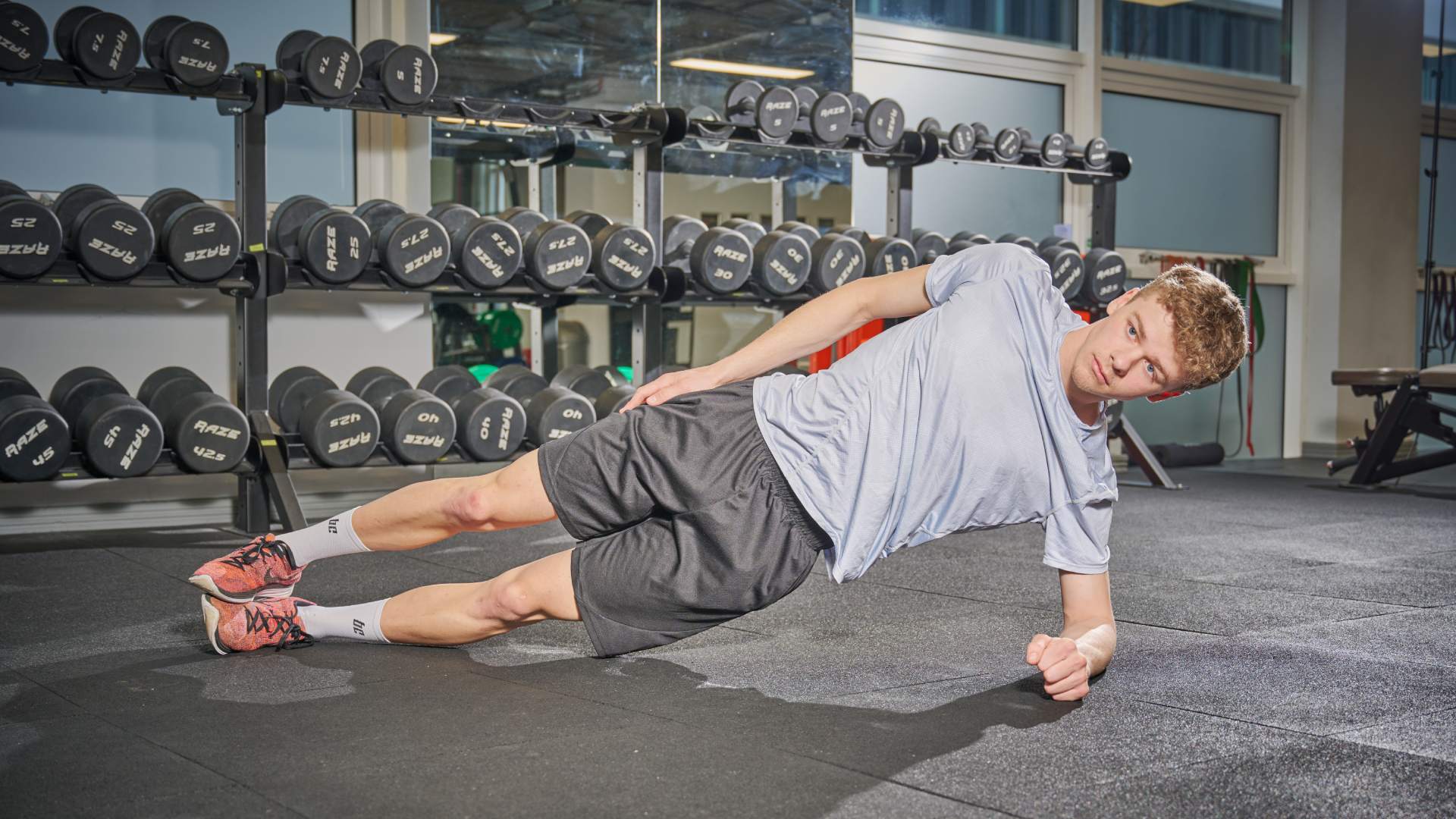
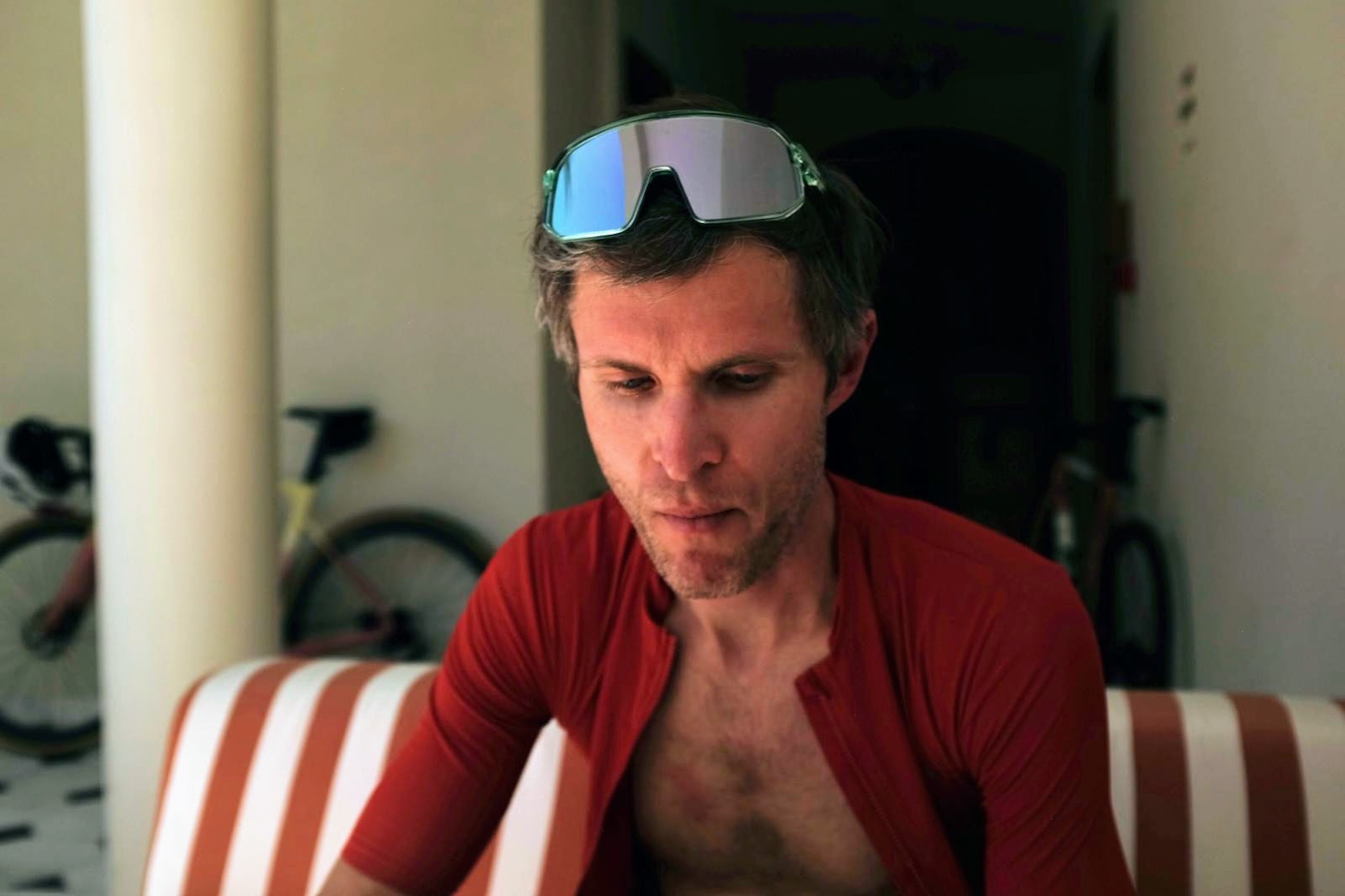
“Astronauts returning to Earth after six months in zero gravity expect to see a serious reduction in bone density,” says Dr Nicky Keay, “but our work with cyclists has shown that a season of racing can have just as harmful an effect.”
She isn’t joking.
The sports endocrinologist has tested a random selection of 50 competitive cyclists in the UK that are cat two or higher, and found that 22 of them had low bone density. In around half those riders, the deterioration was attributed to low energy availability as a result of underfuelling — but it was also confirmed that weight-bearing exercise is a vital ingredient for good bone health.
Why is it important to safeguard bone health?
It’s tempting to think of bones simply as struts for your muscles, unchanging and dependably strong, like an interior carbon frame. But that’s completely wrong. The skeleton is a living, constantly renewing system: it’s not only your central support structure but the production house of blood cells, the storage centre of minerals, and a key player in hormone regulation. Unless you feed it properly and stimulate ‘osteogenic’ growth with loading exercises, it will deteriorate, weaken and ultimately break.
In a follow-up study, Dr Keay provided advice to the participant cyclists and then tracked their bone health and performance over a season of racing. Those who followed her guidelines not only improved their bone density but also achieved significantly greater racing success.
“The ones who made positive changes to their cycling nutrition and regularly performed skeletal loading exercises won on average 95 more British Cycling racing points than those who did not,” says Keay. Ninety-five points — that’s enough to move up a licence category! We paid a visit to Keay to find out exactly how all cyclists can follow her potent, bone boosting regime.
15 minute bone health boosting routine
“The whole point of this exercise routine was to make it practical,” says Dr Keay. “You can do it in your home, as you need no specialist equipment, and it takes only 15 minutes — there is really no excuse.” There’s just one caveat: “These exercises will only work if you do them in conjunction with good nutrition. No amount of loading exercise will compensate for a lack of fuel.”
Get The Leadout Newsletter
The latest race content, interviews, features, reviews and expert buying guides, direct to your inbox!
This quick and relatively easy circuit of exercises was designed by Keay in collaboration with her son, cat-one racer and coach Jamie Francis. Cyclists — of all standards and ages — are advised to undertake this 15-minute bone strengthening routine three times a week.
1. Plank
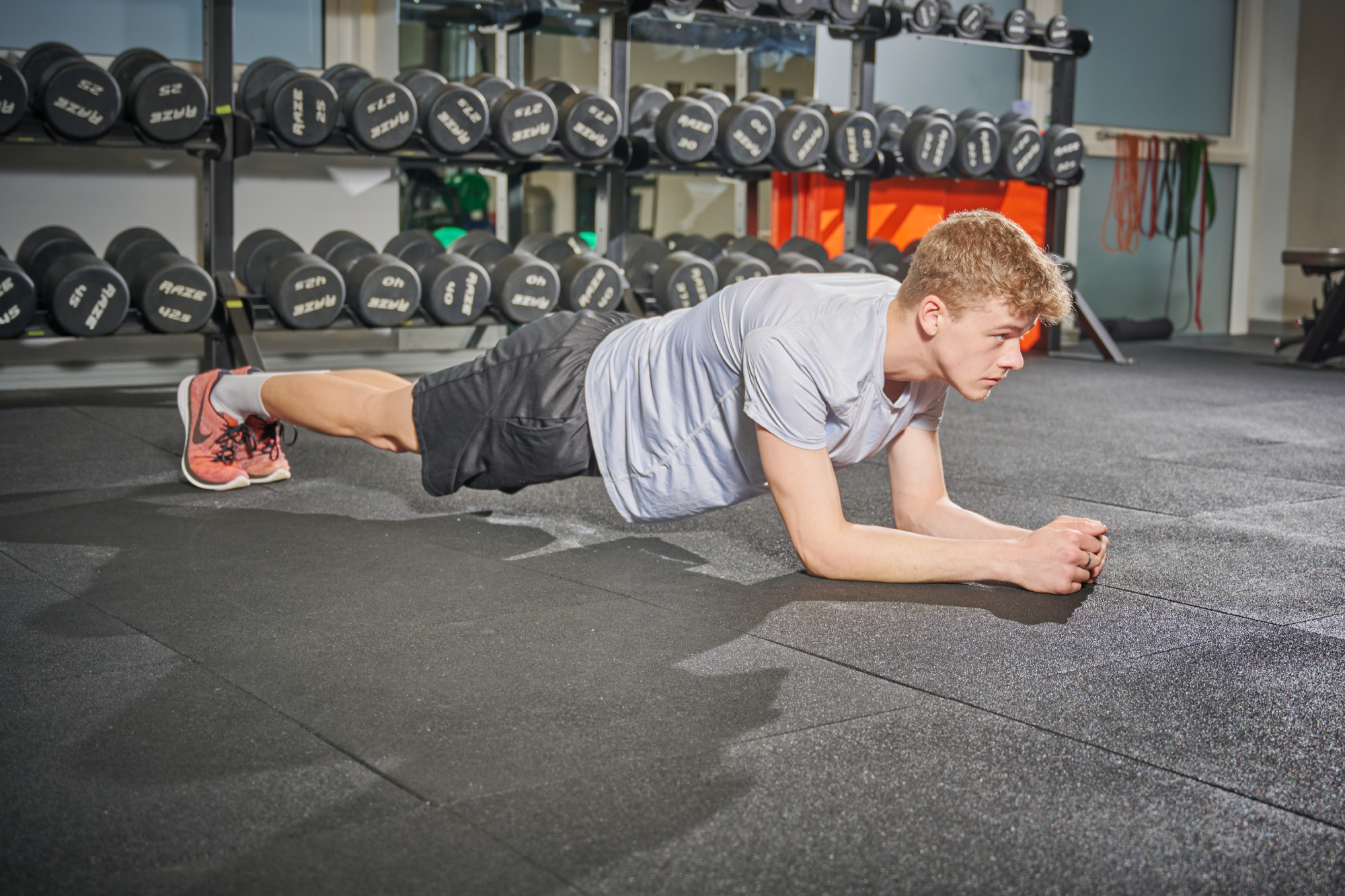
Hold a standard plank for at least one minute. Repeat twice.
Do it right: Actively push into the ground with forearms to activate serratus anterior. Engage core abs and squeeze glutes to keep body aligned.
Progress it: Raise alternate legs during each minute.
Doctor’s orders: “Activating core muscles in isometric [static] fashion is important for all sports, and a good warm up.”
2. Side plank
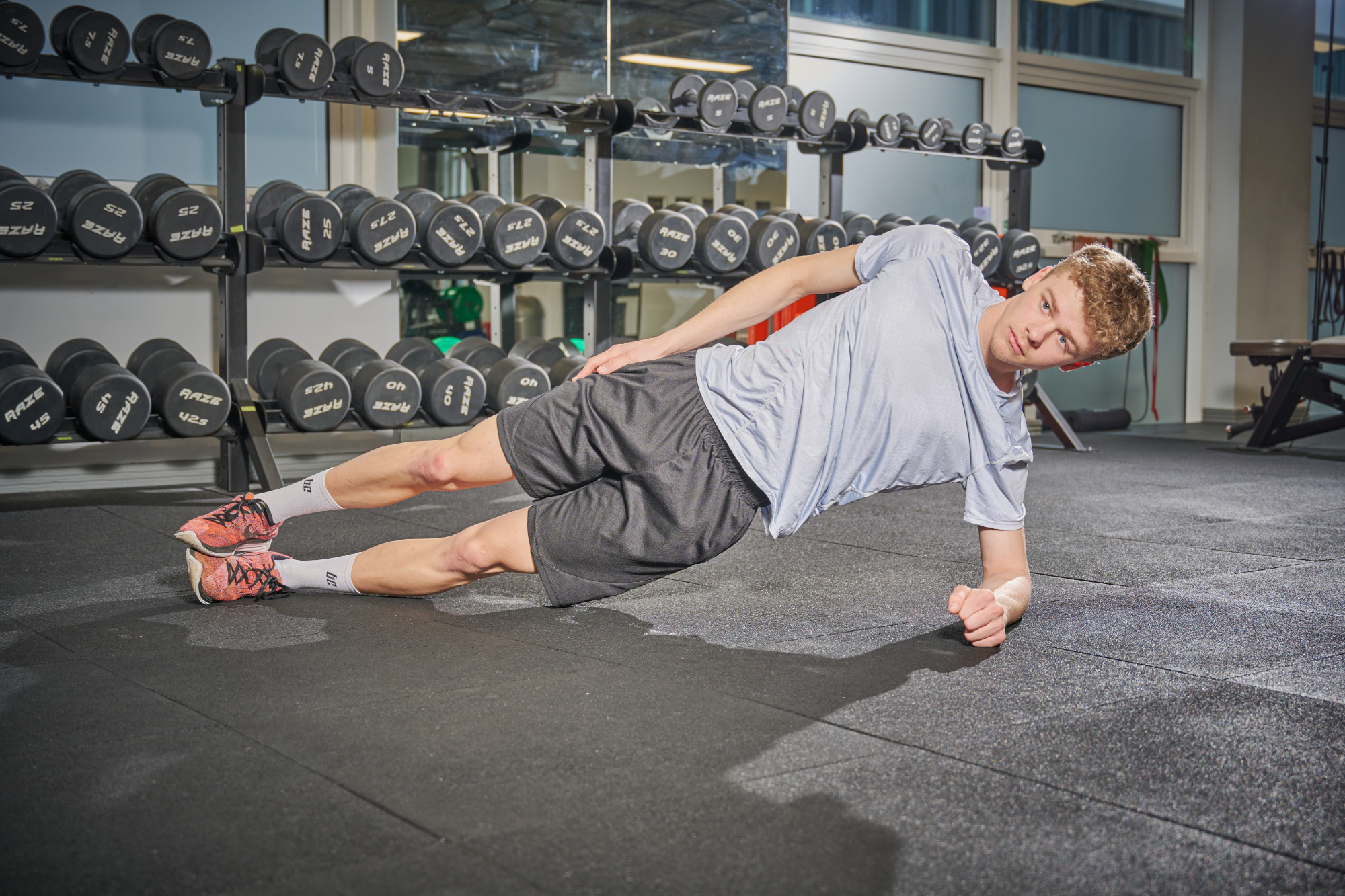
Hold the side plank for at least 30 seconds, twice on each side.
Do it right: Make sure the elbow is directly under the shoulder, and actively push the forearm into the ground. Imagine the body is between two planes of glass: engage abs and glutes, and don’t let your hips drop.
Progress it: Slide top leg up and down lower leg.
Doctor’s orders: “The side plank provides isometric contraction of key core muscles in a different plane.”
3. Back extension
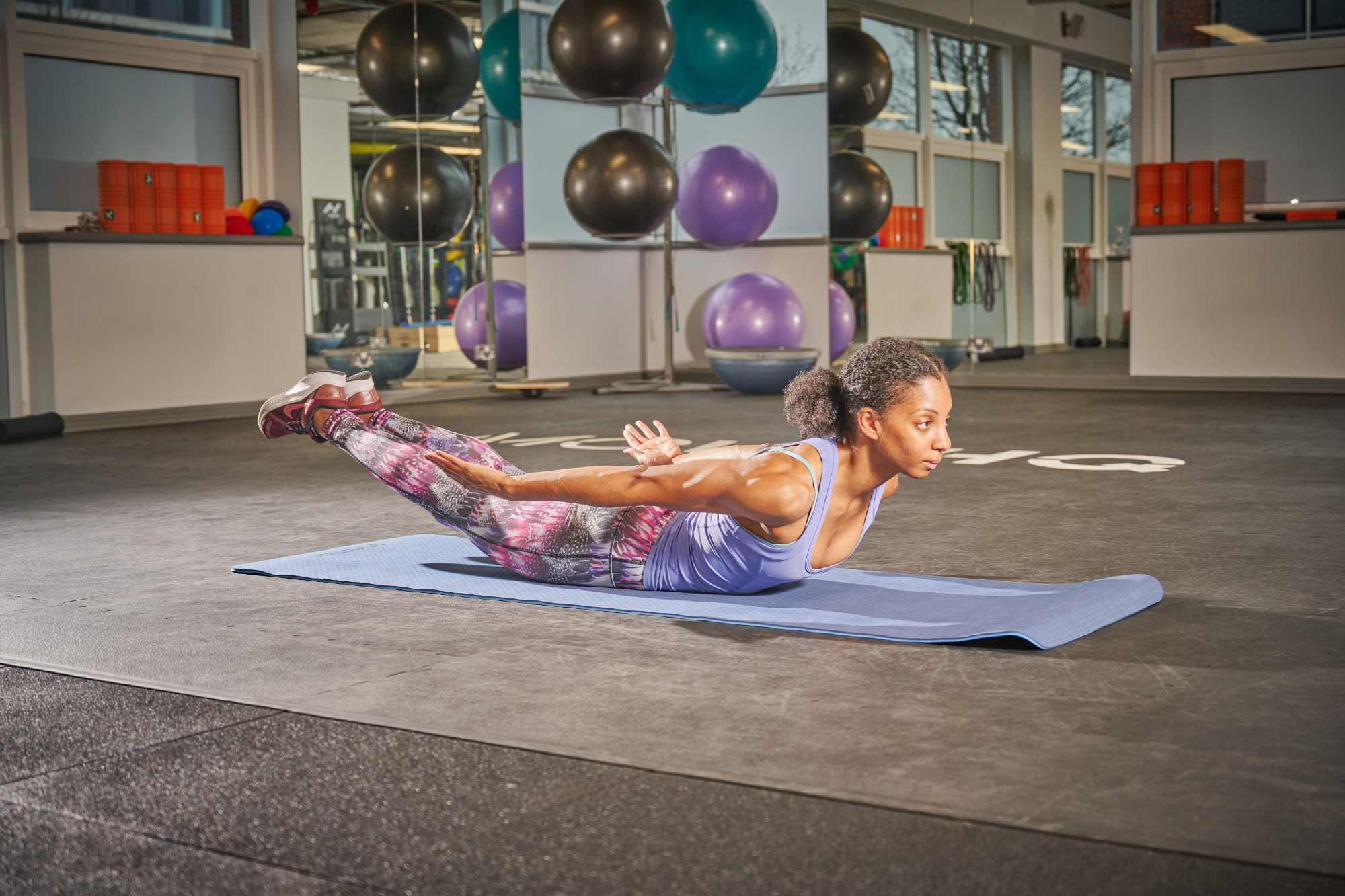
Lie on your front, arms by your sides, palms upwards. Raise your upper body and arms off the ground, and raise legs so they hover just off the floor. Hold for count of three, lower, then raise/hold again. Repeat six times.
Do it right: Keep looking down at the mat, to keep your neck extended. Engage your glutes and abs so as not to compress your lower back.
Progress it: Perform with arms extended straight out in front, and to make it even harder, do this while holding full water bottles and with ankle weights.
Doctor’s orders: “Cycling, like all sitting activities, is performed in forward flexed spine position. This exercise works the underused back extensor muscles, and exerts some muscular force on the bones of the spine.”
4. Front-loading on swiss ball
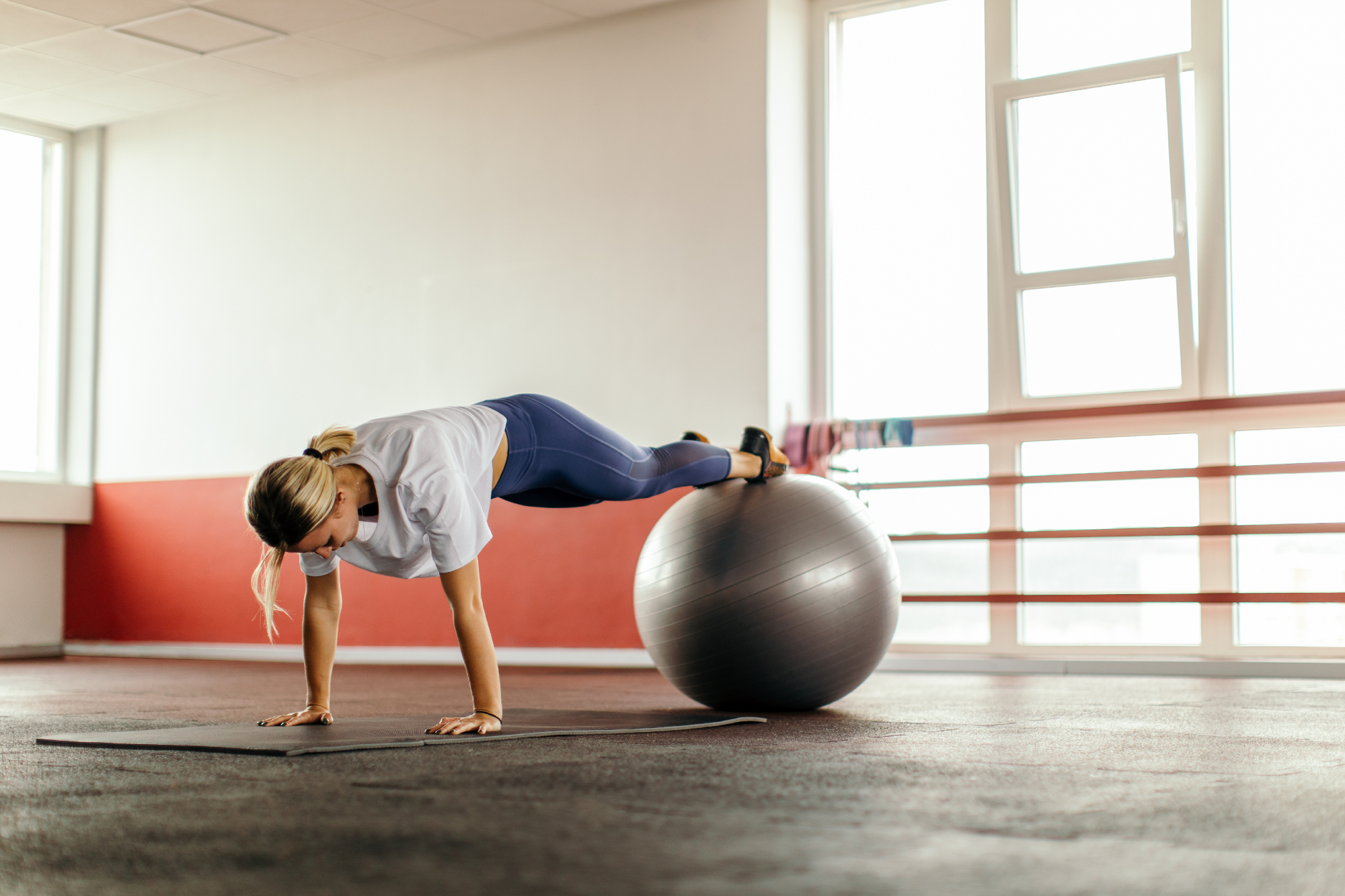
Lie on your front with legs on Swiss ball. Draw legs in and out for a period of 30 seconds. Repeat twice.
Do it right: Engage abs to protect your back, and squeeze glutes on extending legs.
5. Mountain climber
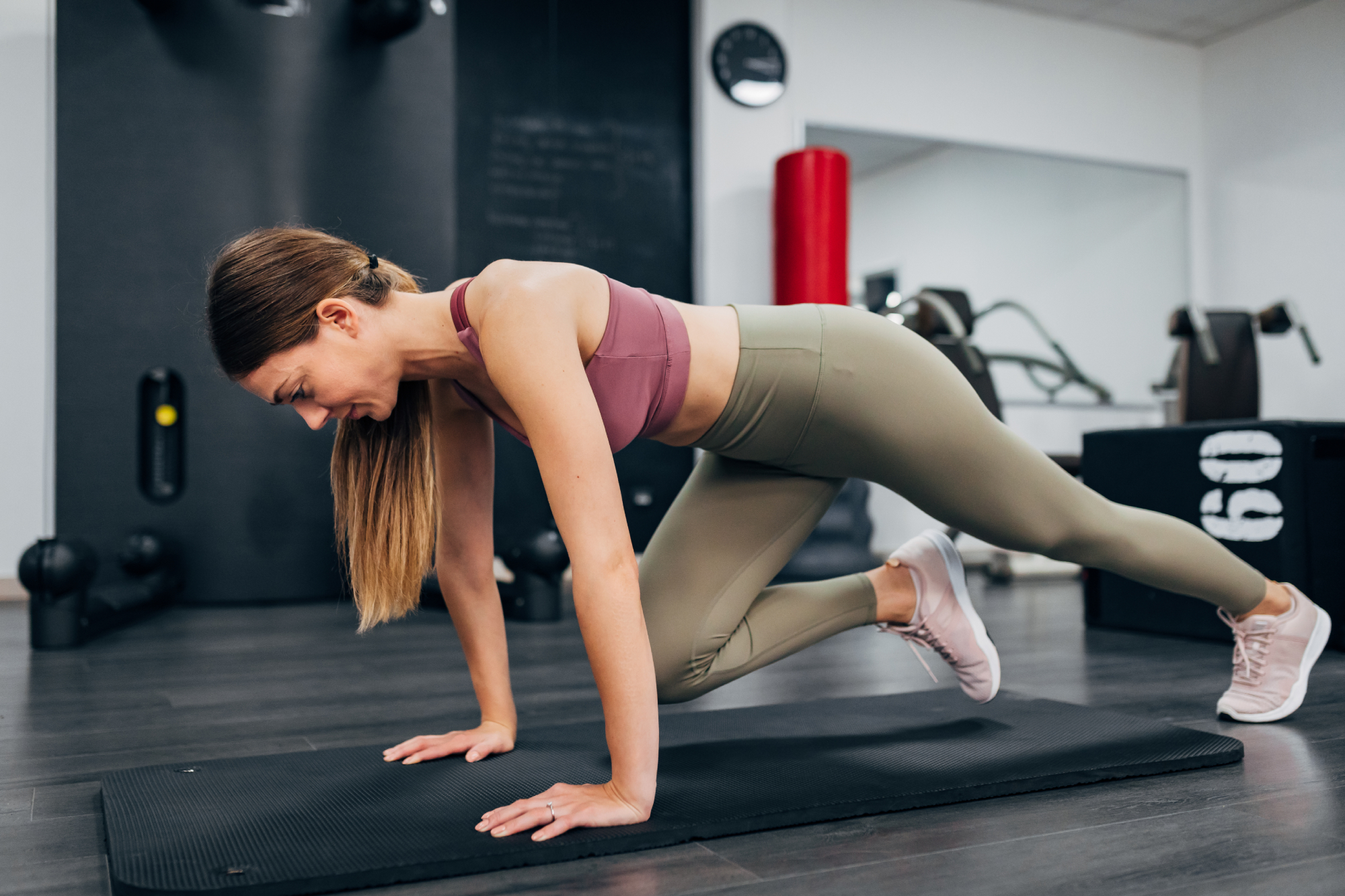
If you don’t have a Swiss ball, assume press-up position and move legs as though climbing on the spot for period of 30 seconds. Repeat twice.
Do it right: Keep trunk still by engaging abs and actively pushing through hands/forearms.
Progress it: Assume press-up position but with forearms on Swiss ball, making you less stable.
Doctor’s orders: “Front-loading the skeleton is really important for cyclists, who spend so much time hunched over the bars. This exercise is a great workout for the core too.”
6. Weighted lunges
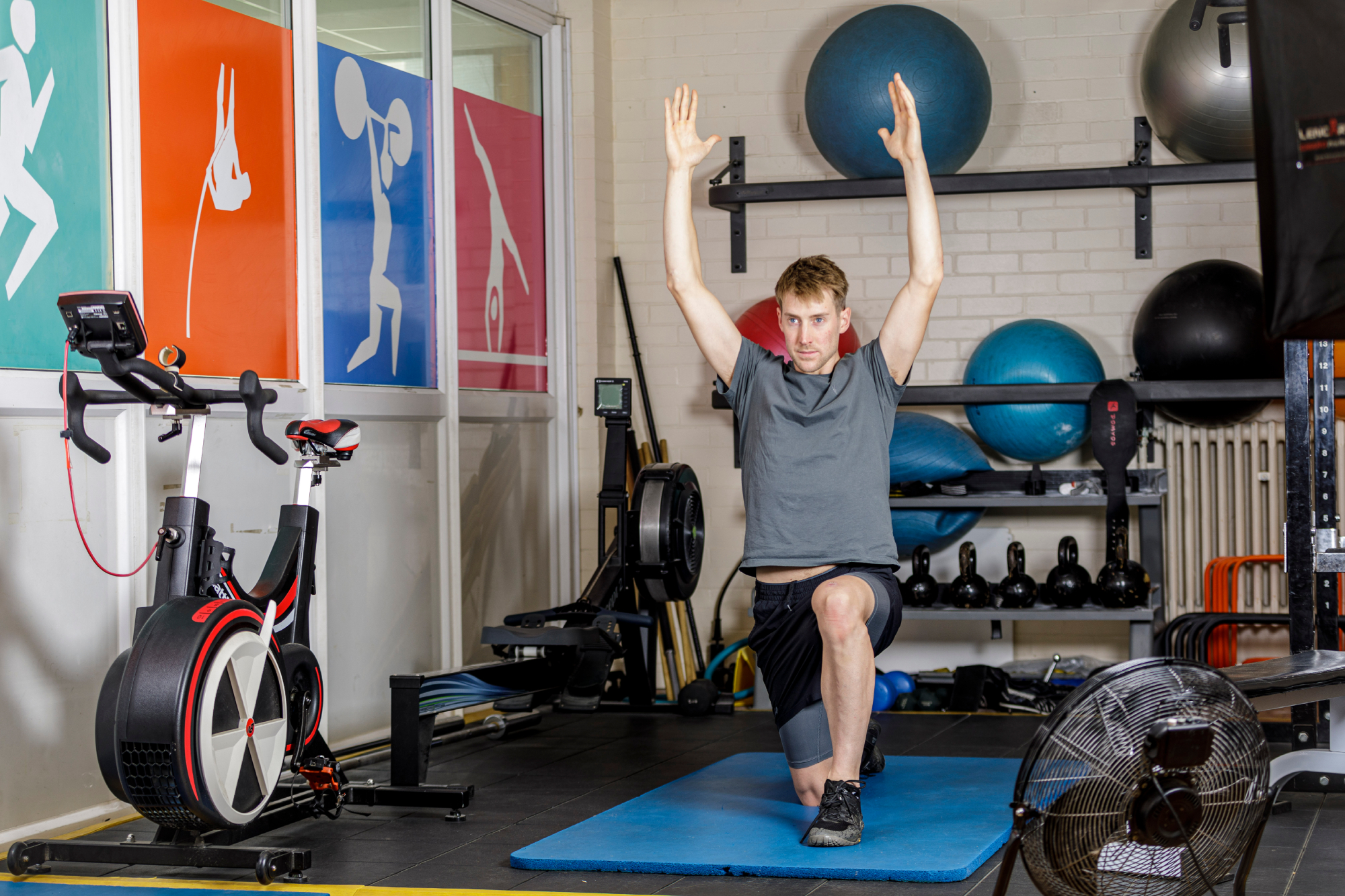
Stride one leg forward, holding hand weights above head, then return to start position and repeat on other leg. Keep lunging for one minute, and repeat twice.
Do it right: At all times focus on leg alignment: kneecaps over balls of feet. Maintain strong core control: upright trunk throughout.
Progress it: Aim to built up to weight of 2.5kg in each hand.
Doctor’s orders: “Lunges are a great exercise because they provide functional loading of skeleton while also improving balance and control.”
7. Squat jumps
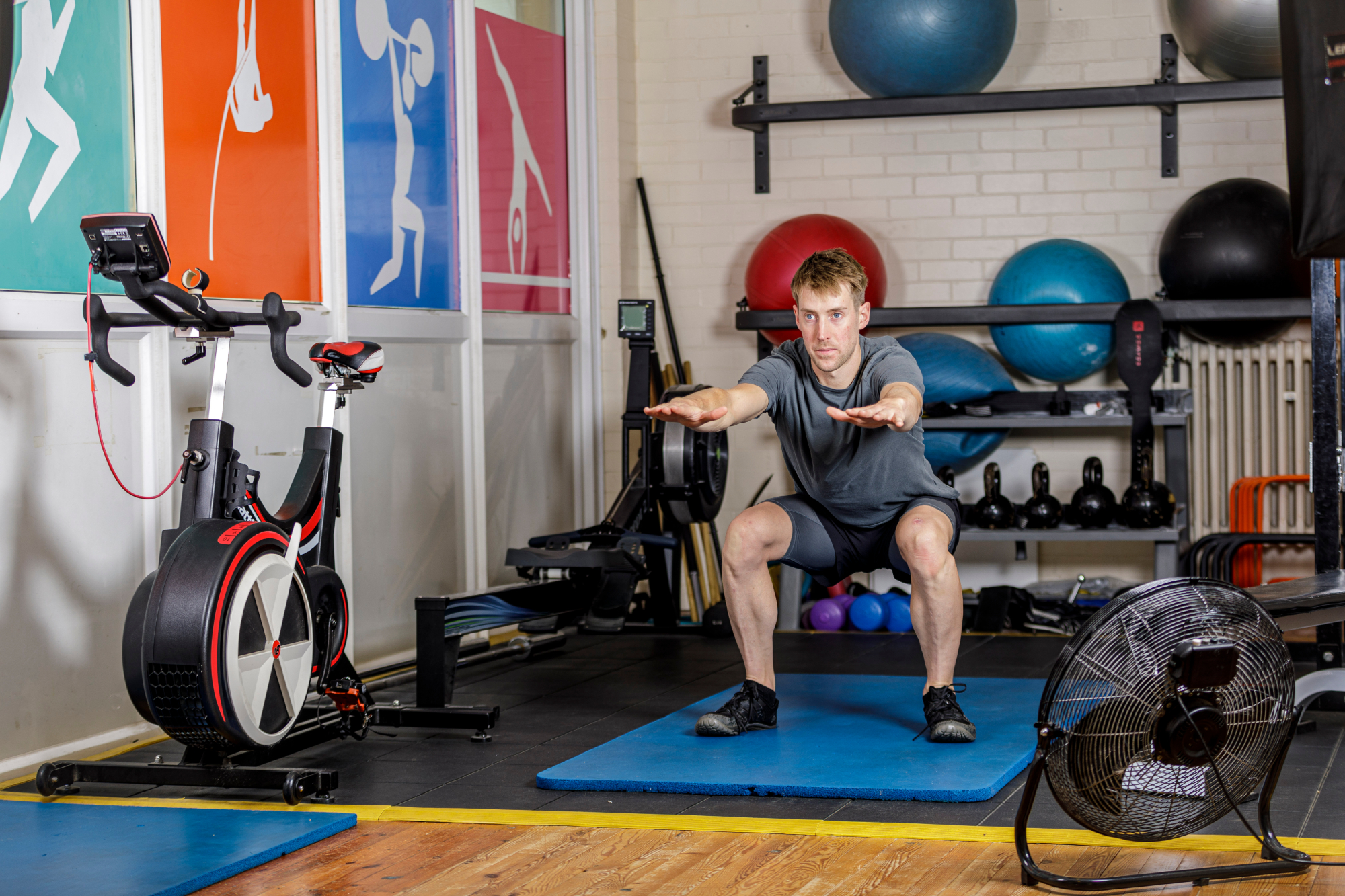
With feet hip-width apart, jump vertically as high as possible, swinging arms up. Land with control, absorbing energy through feet and knees. Keep leaping for 30 seconds, and repeat twice.
Do it right: Imagine you’re resisting gravity on landing. If possible, perform in front of a mirror to check alignment of hips, knees and feet.
Doctor’s orders: “Jumping — impact-loading the skeleton — is the most effective way to maintain and improve bone strength.”
8. Multi-directional hops
Perform five hops on the spot, five forward and back, five side to side. Repeat on the other leg. Perform routine twice on each leg.
Do it right: Through each direction change, maintain good hip, knee and foot alignment — keep the hops controlled.
Progress it: Do 10 of each type of hop on each leg, twice through.
Doctor’s orders: “Multi-directional loading of the skeleton is the gold standard method to improve bone health.”
Nutritionist’s view
Weight-bearing exercises will count for nothing unless you’re eating enough and feeding your body the energy it needs. Under-fuelling weakens your bones and corrodes your fitness. Performance nutritionist David Starr explains…
The desire to lose weight, improve power-to-weight ratio, and acquire the classic skinny cyclist physique can be a strong motivator to cut calories or ramp up training volume. For most riders, a small drop in energy intake from food or a small increase in energy expenditure through exercise can result in gradual and safe weight loss. However, extreme diets or excessive exercise may result in low energy availability and the recognised condition relative energy deficiency in sport (RED-S) — particularly in cyclists who already have low body fat.
Typically, a serious road cyclist needs to eat around 1.5g of protein per kilo of body weight per day, with around 30 per cent of calories coming from fat, and the remaining 45-60 per cent coming from carbohydrates. The deliberate restriction of carbs for so-called “training low” is widely misunderstood, and often leads to under-fuelling and problems with low energy availability. You must ensure that your energy intake and expenditure for the day is balanced; low-carb training is only for days with a low training load.
To help you understand the role of a cycling nutritionist: I monitor my athletes’ food intake for a range of nutrients as well as energy values to ensure that they fuel for the work required while achieving their health, personal and team goals. To assess a new client, I always request a four-day food diary to establish their usual food habits, and I follow this with an extensive discussion of their training and race fuelling. Often, I will act as an assistant coach on Training Peaks so that I can plan nutrition around the training programme designed by their coach. I usually obtain blood tests to check for key nutrient levels and blood markers and may arrange a DEXA scan, which provides information about bone mineral density, lean body mass and body fat.
From a nutrition point of view, low energy availability and the associated low bone mineral density is best dealt with by ensuring sufficient energy intake and focusing on calcium and vitamin D, but more serious cases require expert medical help. In the UK, vitamin D deficiency is very common, so supplements are often recommended. I also use resistance training and impact exercises to stimulate bone metabolism, in conjunction with the athlete’s coach. Here are a few tips on how to avoid low energy availability:
1. Use an activity tracker to work out your exercise energy expenditure; add this to your resting energy expenditure (omnicalculator.com), then use this data to calculate target energy intake for the day.
2. If you notice a significant decrease in your on-bike performance, take a break for a day or two and review your diet. Reduced performance is an early indicator that you’re running short on energy.
3. Track your food for three-four days each month. Obsessive tracking can lead to an unhealthy relationship with food but checking occasionally may help you match your energy intake and expenditure.
4. Pay attention to your health. Have you been picking up illnesses? Eating less but not losing weight? If you aren’t eating enough to support your lifestyle and exercise, your body will shut down processes that need energy.
5. If you have any concerns about your health, talk to your GP and accept their help in addressing any issues.
6. Undertake regular weight-bearing exercise such as the routine featured in this article.

Thank you for reading 20 articles this month* Join now for unlimited access
Enjoy your first month for just £1 / $1 / €1
*Read 5 free articles per month without a subscription

Join now for unlimited access
Try first month for just £1 / $1 / €1

David Bradford is features editor of Cycling Weekly (print edition). He has been writing and editing professionally for more than 15 years, and has published work in national newspapers and magazines including the Independent, the Guardian, the Times, the Irish Times, Vice.com and Runner’s World. Alongside his love of cycling, David is a long-distance runner with a marathon PB of two hours 28 minutes. Having been diagnosed with retinitis pigmentosa (RP) in 2006, he also writes about sight loss and hosts the podcast Ways of Not Seeing.
-
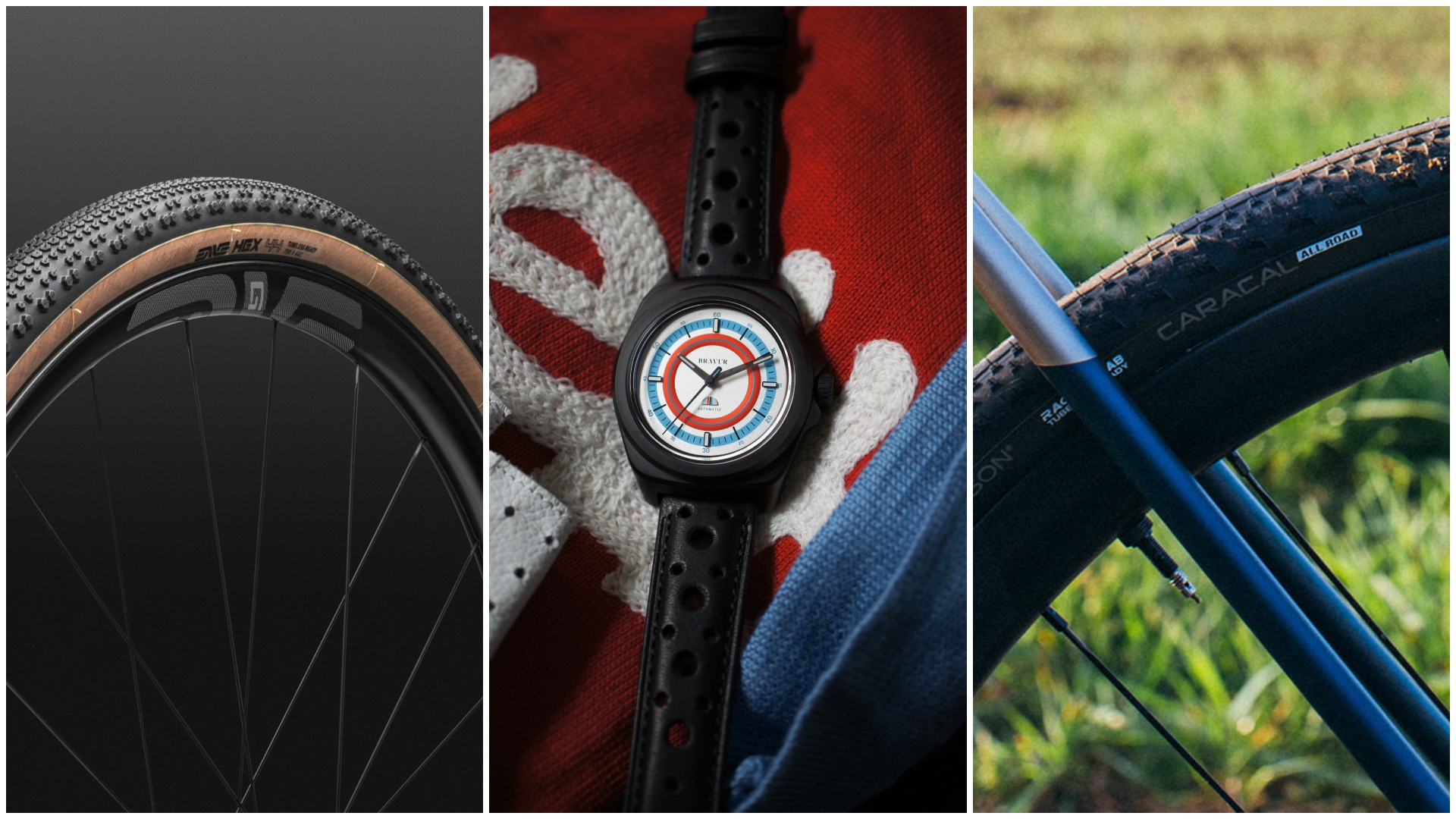 Tech Roundup: A gravel bike with 57mm tyre clearance, a not-smart, but very smart watch for cyclists, and new rubber from Enve, and Hutchinson
Tech Roundup: A gravel bike with 57mm tyre clearance, a not-smart, but very smart watch for cyclists, and new rubber from Enve, and HutchinsonAllied's latest release is proof that tyres are only getting wider
By Joe Baker Published
-
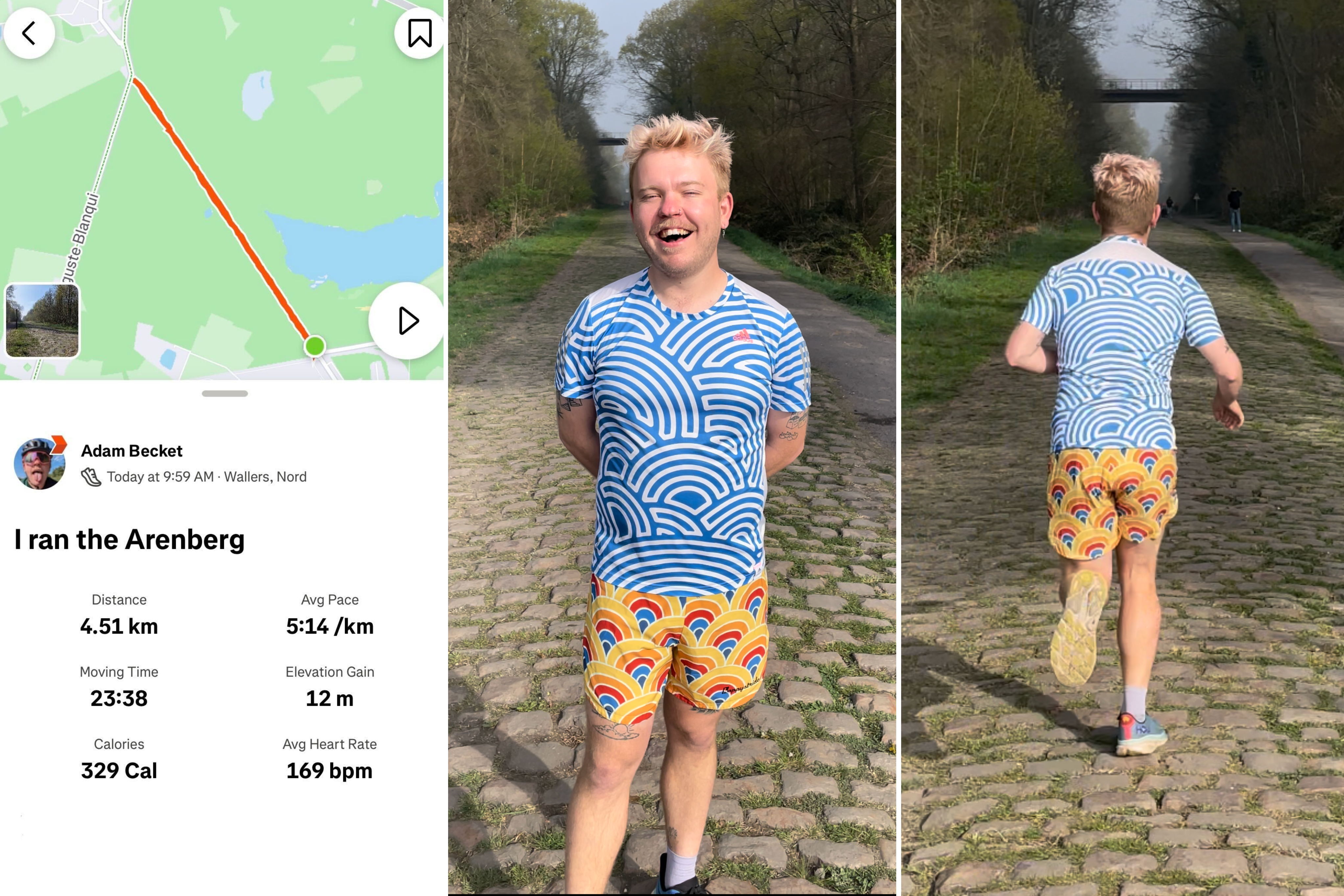 I ran Paris-Roubaix’s Arenberg sector and now I never want to cycle it
I ran Paris-Roubaix’s Arenberg sector and now I never want to cycle itThe five-star stretch of the Hell of the North was not an ideal surface for a 4.5km run, but it made for an interesting time
By Adam Becket Published